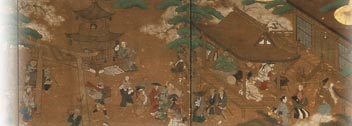International Symposium: Stage to Screen
Outline
| date | March 3–5, 2008 |
|---|---|
| Venue | Waseda University (International Conference Center); National Museum of Modern Art, Tokyo (National Film Center) |
| Organizer | |
| outline | International Symposium: Stage to Screen |
Details
The International Institute for Education and Research in Theatre and Film Arts hosted a three-day international symposium titled "Stage to Screen". Named after the seminal work written in 1949 by Nicholas Vardac, Stage to Screen: Theatrical Method from Garrick to Griffith, which delves into the question of the influence theatre and cinema had on each other as well as clarifying the unique properties of each, the symposium featured leading figures in film and theatre studies from Japan and overseas, all of whom examined the theatrical origins of early cinema from a variety of points of view with reference to the main argument of Vardac's book. The symposium involved keynote lectures, academic presentations, discussions and film screenings, which took place over the three days.The first day of the symposium began with a keynote lecture by the University of Chicago's Professor Yuri Tsivian, a leading figure in studies of early cinema in Russia and a recipient among other prizes of the Prix Jean Mitry. The lecture was titled "What Can We Do in Films That They Cannot on Stage? Film Style and Medium Specificity in the Cinema of 1910s". This was followed by a 90-minute discussion between Professor Tsivian and Professors Yasushi Nagata of Osaka University, Hajime Kaizawa of Waseda University, and Hiroshi Komatsu of Waseda University, on "Stage to Screen—A Historical Perspective". A variety of observations were exchanged on the rich relationship between theatre and film, mainly in Russia, and its significance in historical terms.
The second day of the symposium began with presentations by four young researchers, three of whom were Global COE associate fellows. They all dealt with the transition from stage to screen in Japan, covering diverse topics such as the character of the media of film and theatre, differences in treatment of themes, and the nature of the performance of the benshi (a person who accompanied silent film with commentary and dialogue). There was also a thought-provoking presentation on Samuel Beckett, one of the greatest writers of the twentieth century active in both film and theatre. This was a very valuable occasion, especially useful for young academics. It was followed by keynote lectures by Professor Komatsu and David Bordwell, emeritus professor at the University of Wisconsin-Madison. Professor Komatsu's lecture, "Actors without Bodies—Theatrical Phantasms in the Silent Movies", looked at a selection of movies, Japanese and Western, and treated them to detailed historical analysis. Professor Bordwell, a leading film critic and theorist and author of numerous highly acclaimed books not only on American movies but film history and theory as well, delivered a lecture titled "Debts and Refusals: Some Theories of Cinema's Relation to Theatre". In this he provided a theoretical discussion using the writings of a number of authors and film theorists on the relationship between theatre and film. This was followed by a discussion on "Stage to Screen—A Theoretical Consideration" between Professors Bordwell, Tsivian, Komatsu and Kiyoshi Takeda of Waseda University, which provided a contrast to the specific content of the preceding day.
On the third day of the symposium, the focus narrowed down to the transition from stage to screen in early Japanese cinema. In the morning, there was a showing for conference participants of two extremely rare films, based on stories originally performed in kodan (novelistic oral recitations) and kabuki, at the National Film Center in the National Museum of Modern Art, Tokyo. The films were "Goro Masamune Koshiden", a movie produced in 1915 by Tenkatsu film company, and "Roben-Sugi", produced in 1922 by Teikoku Kinema Engei film company. In the afternoon, after a short break, the venue shifted to Waseda University's International Conference Center, where Professors Bordwell and Tsivian joined Professor Hideo Furuido, a prominent researcher in kabuki studies based at the University of Tokyo, and Associate Professor Ryuichi Kodama of Japan Women's University, in a discussion chaired by Professor Komatsu, based on the film screenings in the morning. While such discussions between leading international figures in film studies are common at film festivals and other such events in Japan and abroad, it is rare for the discussion to center on films specific to Japan, with such uniquely Japanese style and subject matter, and for specialists in kabuki to be able to participate in the discussion. The symposium was significant both for film studies in general, and for studies of early Japanese cinema, still relatively unexplored, with much to inspire young researchers as well as any students hoping to specialize in film.


